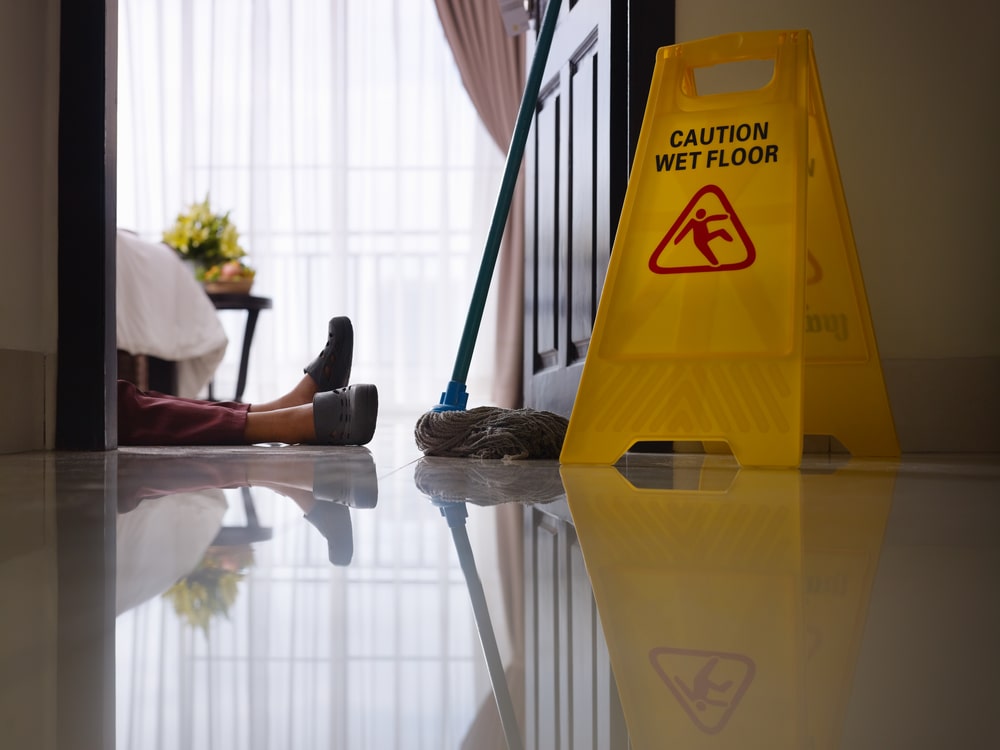Life is unpredictable, and sometimes a simple stroll down a familiar pathway can take an unexpected turn – quite literally. Slip and fall accidents may sound trivial, but when injuries occur due to someone else’s negligence, it becomes a legal battleground. Our friends at Kiefer & Kiefer have seen the aftermath of slip-and-fall accidents, and bruised pride is the least of the victim’s worries. An experienced slip-and-fall lawyer may be your only hope of recovering just compensation.
The Gravity Of The Situation
Slip and fall accidents are not just about a clumsy misstep; they can lead to serious injuries. Broken bones, sprained joints, and head injuries are all too common. What might seem like a minor fall can have lasting consequences for your health and well-being.
The Role Of Negligence
Now, let’s talk about the legal side of things. The key to a slip and fall case is negligence. Negligence occurs when someone fails to take reasonable care to prevent harm to others. In the context of slip and fall accidents, this means property owners or managers must ensure their premises are safe for visitors.
Hazardous Conditions
Property owners are responsible for maintaining a safe environment. If there’s a spill, a broken step, or a loose tile that causes someone to slip, trip, or fall, it’s a red flag. These hazardous conditions are the ammunition in a slip and fall case. It’s like playing detective – identifying what caused the fall and whether it could have been prevented.
The ‘Reasonable Person’ Standard
In the legal world, we often refer to the “reasonable person” standard. This imaginary character is the benchmark for what a sensible, careful, and prudent person would do in a given situation. In slip and fall cases, your personal injury attorney would ask: Would a reasonable person have noticed and fixed the hazardous condition? If the answer is yes, negligence may be at play.
Gathering Evidence
Like any good case, evidence is crucial. If you take a tumble, try to document the scene. Take pictures of the area, note any signs warning of hazards, and gather contact information from witnesses. The more evidence, the better your chances of proving negligence.
Timely Reporting
Timing is everything. Report the incident to the property owner or manager as soon as possible. This not only ensures they are aware of the issue but also creates a record of your injury. Delayed reporting can give the impression that the accident wasn’t severe or that it happened elsewhere. In addition, each state has a statute of limitations for filing a claim. If you miss your window to file suit, you essentially forfeit your right to take legal action.
Comparative Negligence
Now, here’s a tricky part. Sometimes, both parties share some blame. Let’s say you were texting while walking on a wet floor – you share a portion of the responsibility. In some states, this is called comparative negligence. It means your compensation may be reduced based on your own level of fault.
Navigating The Legal System After A Slip-and-Fall Accident
In the aftermath of a slip and fall, don’t dismiss it as mere clumsiness. If negligence played a role, it’s your right to seek compensation for medical bills, lost wages, and pain and suffering. A lawyer’s job is to simplify the legal complexities and guide you through the process. If you find yourself on the wrong end of a slip and fall, remember – you have the right to stand up for your safety and well-being.
